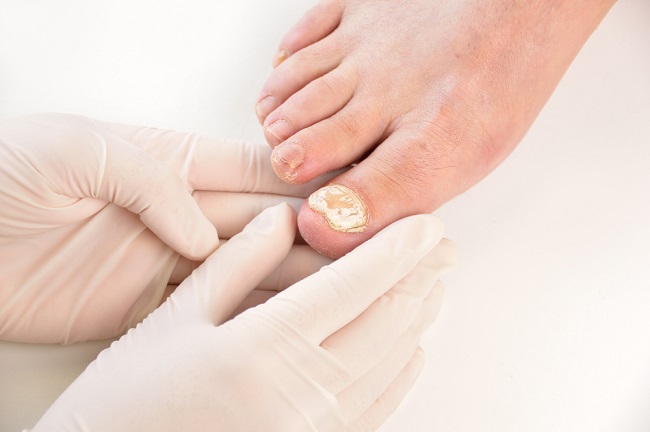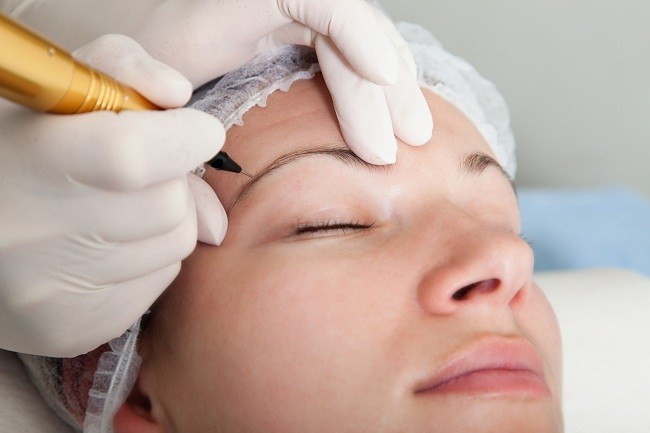Always read the label listed to find out whether the ingredients contained in skin whitening are safe or not.
White skin is often associated with the concept of beauty and happiness. This myth makes many women vying to whiten the skin. In fact, not a few whitening products on the market contain ingredients that are potentially harmful to health.

In 2013, the Food and Drug Supervisory Agency (BPOM) secured more than 74,000 units of cosmetic products that contain hazardous ingredients and do not have distribution permits. In the same year, 17 cosmetic brands were announced that contain hazardous ingredients. Most of them are skin whitening products.
Melanin - Determinants of Skin Color
Like determining the color of hair and eyes, human skin color is also determined by the color and content of a pigment called melanin. Melanin levels in the skin are generally determined by a combination of heredity and the level of sun exposure.
Skin that is often exposed to sunlight stimulates the production of melanin which then makes the skin darker. In other words, melanin is a natural sunscreen or a form of adaptation of human skin to the natural conditions in which it is located.
The bad effects of ultraviolet are more preventable on dark skin because they contain a lot of melanin. This is because melanin functions to absorb and eliminate the negative effects of ultraviolet rays from the skin's surface. At the same level of sun exposure, fair-skinned people are ten times more likely to get diseases due to the dangers of ultraviolet light such as skin cancer than dark-skinned people.
Observing the Ingredients and How Whitening Products Work
The ingredients used in whitening products function to lighten skin color by fighting the natural melanin production process so that melanin levels in the skin are reduced. With reduced levels of melanin, skin color becomes whiter.
Each ingredient contains benefits and side effects. Some materials are categorized as dangerous because they cause adverse effects even in limited levels. While other ingredients can be tolerated so that the benefits are more dominant than the side effects.
Keep in mind, that in general, skin whitening reduces melanin production, causing the skin to become more sensitive to sunlight. In the long term, its use can cause premature aging and skin cancer. With reduced levels of melanin, the impact of ultraviolet light on the skin increases. Excessive exposure to ultraviolet light accelerates the occurrence of wrinkles and has the potential to trigger skin cancer.
Risky Material
Mercury (mercury)
Mercury or mercury is a metal that under normal conditions is a gray colorless liquid that is odorless and insoluble in water and alcohol, but soluble in nitric acid, hot sulfuric acid, and lipids.
Mercury is an active ingredient that has an impact in exfoliating the skin's epidermis. In the long term, its use can cause:
- Damage to kidney function, nervous system, and psychological problems arise.
- Brain function abnormalities in fetuses from mothers using mercury-based bleach.
Hydroquinone
Hydroquinone is a chemical used in the photo printing washing process and is useful as a stabilizer in oils, paints, varnishes, and vehicle fuels.
The Food and Drug Administration (FDA) or the United States POM Agency states that over-the-counter whitening products can only contain a maximum hydroquinone level of up to 2%. Meanwhile, if this product is prescribed by a dermatologist, it can only contain a maximum of 4% hydroquinone. The use of hydroquinone above 4% can cause a rash on the skin due to burning.
In Indonesia, whitening products containing hydroquinone were allowed to circulate at the same level. However, since 2008, through the Regulation of the Head of the POM Agency of the Republic of Indonesia Number: HK.00.05.42.1018 concerning Cosmetic Ingredients, the hydroquinone content in whitening products should not be used at all.
In detail, the regulation states that hydroquinone should only be used by professionals as a color oxidizing agent in hair dye and nail polish.
High or sustained use of hydroquinone can trigger:
- Hyperpigmentation, namely darkening of the skin color due to increased levels of melanin. Melasma, or dark patches, is an example of a hyperpigmented condition.
- Vitiligo: overall loss of skin pigment due to the death of melanocyte cells, which produce melanin. The main feature of vitiligo is the appearance of white patches on the skin.
- Exogenous ochronosis: the skin becomes dark blue. Generally caused by accumulation homogentisic acid (alkaptonuria disease).
Steroids
Steroids, sometimes also called corticosteroid, is an ingredient that is usually used to reduce inflammation, for example in reddened and itchy skin. If consumed in high levels or continuously, this relatively strong steroid can cause cataracts and weakened bones.
Especially for the skin, the side effect of using steroids is thinning of the skin layer. If the skin becomes too thin, the person will be more easily scratched or injured. Steroids that are applied to the skin can be absorbed by the body and then enter the blood vessels. Other side effects are:
- Telangiectasia: capillary blood vessels visible on the skin surface due to the thin layer of the skin.
- Pimple
- Slows wound healing
Rhododenol
Rhododenol is a natural chemical from the bark of the white birch tree that reduces the production of melanin.
This material was actually approved by the Japanese health agency and was even used in the products of some of the leading cosmetic companies in Japan. However, this ingredient has also been revoked by the Japanese government because it has been shown to have a negative impact on health.
However, products containing rhododenol and had been sold in Indonesia was finally withdrawn from the market since July 2013. This withdrawal was motivated by reports of a number of consumers who complained of experiencing depigmentation or white patches on the skin.
Combination of hydroquinone, corticosteroid, and retinoic acid
Corticosteroids and retinoic acid It is commonly used in the treatment of several skin problems such as hyperpigmentation (dark patches on the skin). But when mixed with hydroquinone, the product is considered unsafe.
In the long term and excessive levels, its use can cause thinning of the skin and make the skin turn pink.
Ascorbic acid (vitamin C) and its derivatives
Vitamin C whitens the skin by functioning as a powerful antioxidant that suppresses the oxidation reaction in the synthesis of melanin. Vitamin C skin whitening is usually given in the form of injections.
Although effective for lightening the skin, but if given in high levels can pose risks:
- Aggravating the work of the kidneys to trigger kidney failure
- Causes kidney stones
- Headache
- Faint
Injecting vitamin C should also be avoided by pregnant women because it can interfere with fetal growth.
Safe Material
In general, many natural ingredients are safe and can help the skin whitening process. But even safe materials have the potential to have a negative impact if used excessively. For the sake of safety and health, users need to pay attention to the content of ingredients and how to use them safely.
The following are the ingredients contained in whitening products that are categorized as safe:
Kojic acid - This ingredient is produced from several types of mushrooms and is used in the Japanese sake brewing process. Kojic acid classified as safe. However, irritation such as skin redness can occur in people with sensitive skin and if used carelessly.
Arbutin - Bearberry plant extract that inhibits the work of tyrosinase, an enzyme that plays an important role in the formation of melanin. Long-term use of arbutin can cause some side effects including depigmentation or patches of skin.
Lycorice Extract - A plant extract of a type of legume that inhibits the tyrosinase enzyme. Lichoris is relatively safe. In the long term, lycopene is absorbed by the body and can be at risk of triggering high blood pressure.
Chamomile Extract - Chamomile plant extract absorbs melanin pigment. This material should be avoided by people who are allergic to plants such as chamomile flowers such as daisies.
Mulberry Extract - Just like lycoris extract, this ingredient inhibits tyrosinase activity and functions as a free radical scavenger. The lack of data on the side effects of using mulberry in pregnant and lactating women makes this group should limit its use.
Green tea extract - Inhibits the release of melanosomes from melanocytes to keratinocytes and reduces tyrosinase activity. So far, research has not proven any side effects for using green tea extract by applying it to the skin.
Alpha-MSH antagonists - Useful for inhibiting the work of the tyrosinase enzyme and the melanin production process. The side effects are not fully known.
Reducing the Risk of Harmful Ingredients in Skin Whitening
Here are some things you can do to avoid the harmful effects of harmful bleach:
- Make sure the cosmetics you are going to buy are registered in the BPOM-registered cosmetic list.
- Registered cosmetic products must include a distribution permit number. Meanwhile, notified products are not required to include a notification number, but must include the name and address of the manufacturer on the label. A list of notified products can be seen here.
- Always read the ingredient label on each package of skin whitening products, including the method and dosage of use, composition, and expiration date.
- Although the impact of using certain products will only be felt in the long term, but it never hurts for you to do a cosmetic sensitivity test in the following ways:
- Apply the product to the plaster.
- Apply the plaster for 24 hours on the inside of the forearm.
- Keep the plaster from getting wet.
- Remove the tape and check if the product reacts to the surface of your skin.
If your skin doesn't react badly, the product is most likely safe for you. However, discontinue use if the skin becomes red, itchy, blistered, or painful.
Consult the use of skin whitening products with your doctor before use, especially if you are pregnant.









